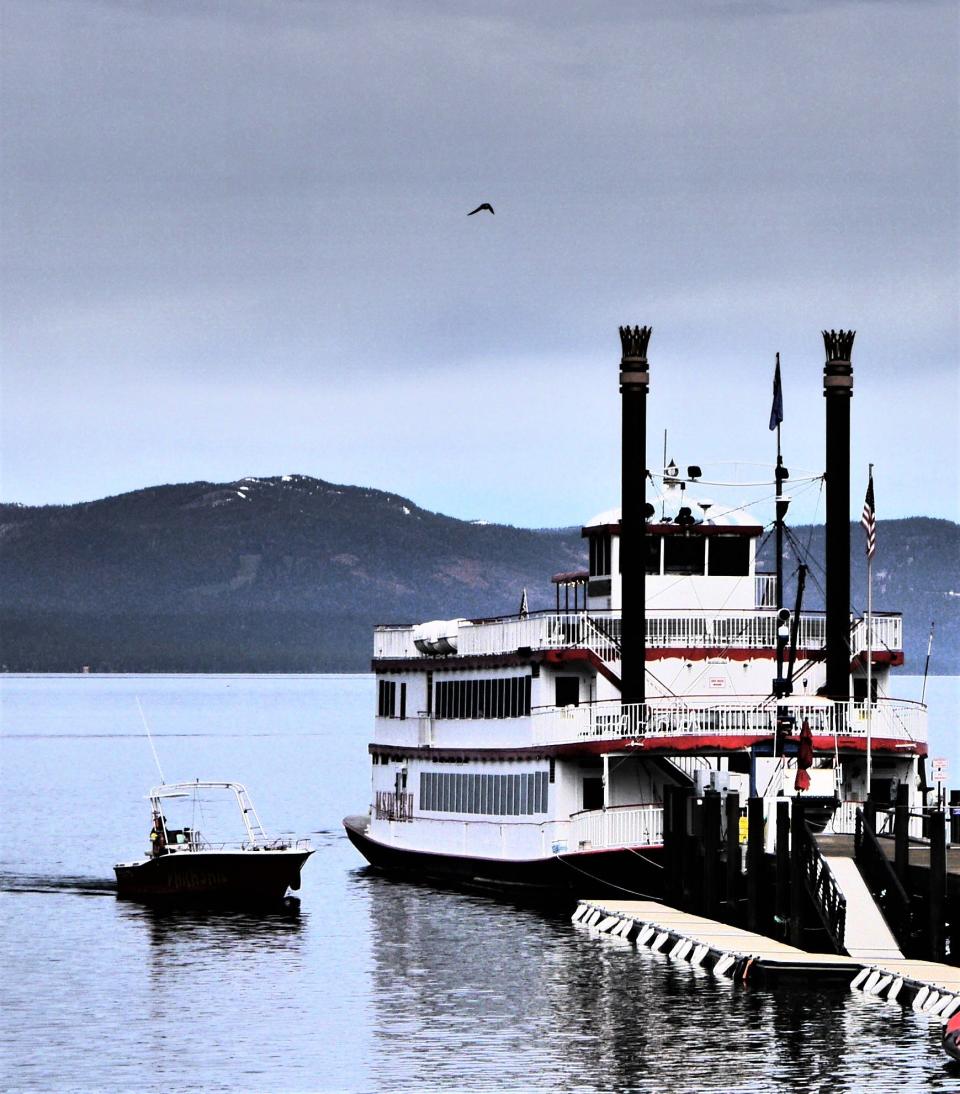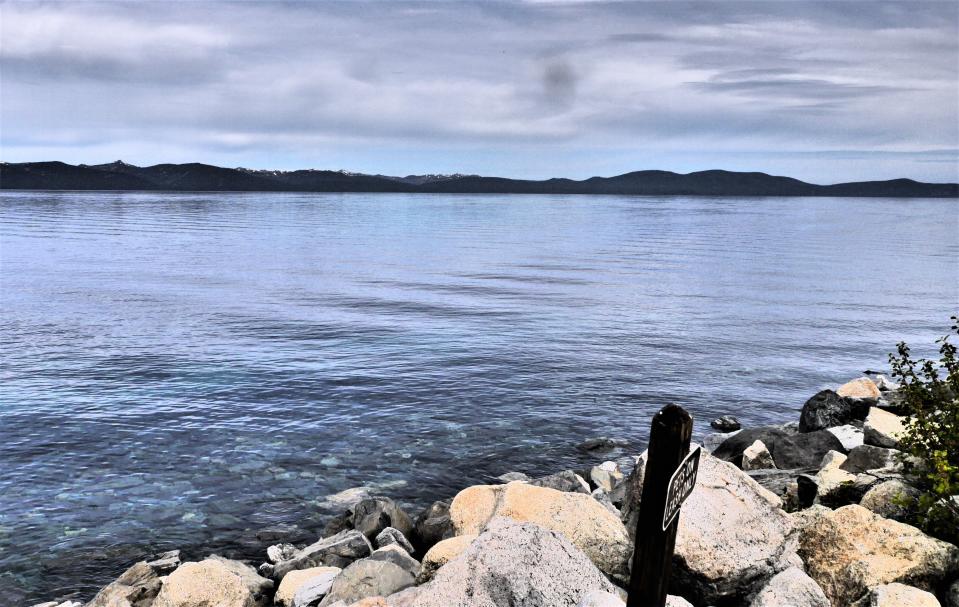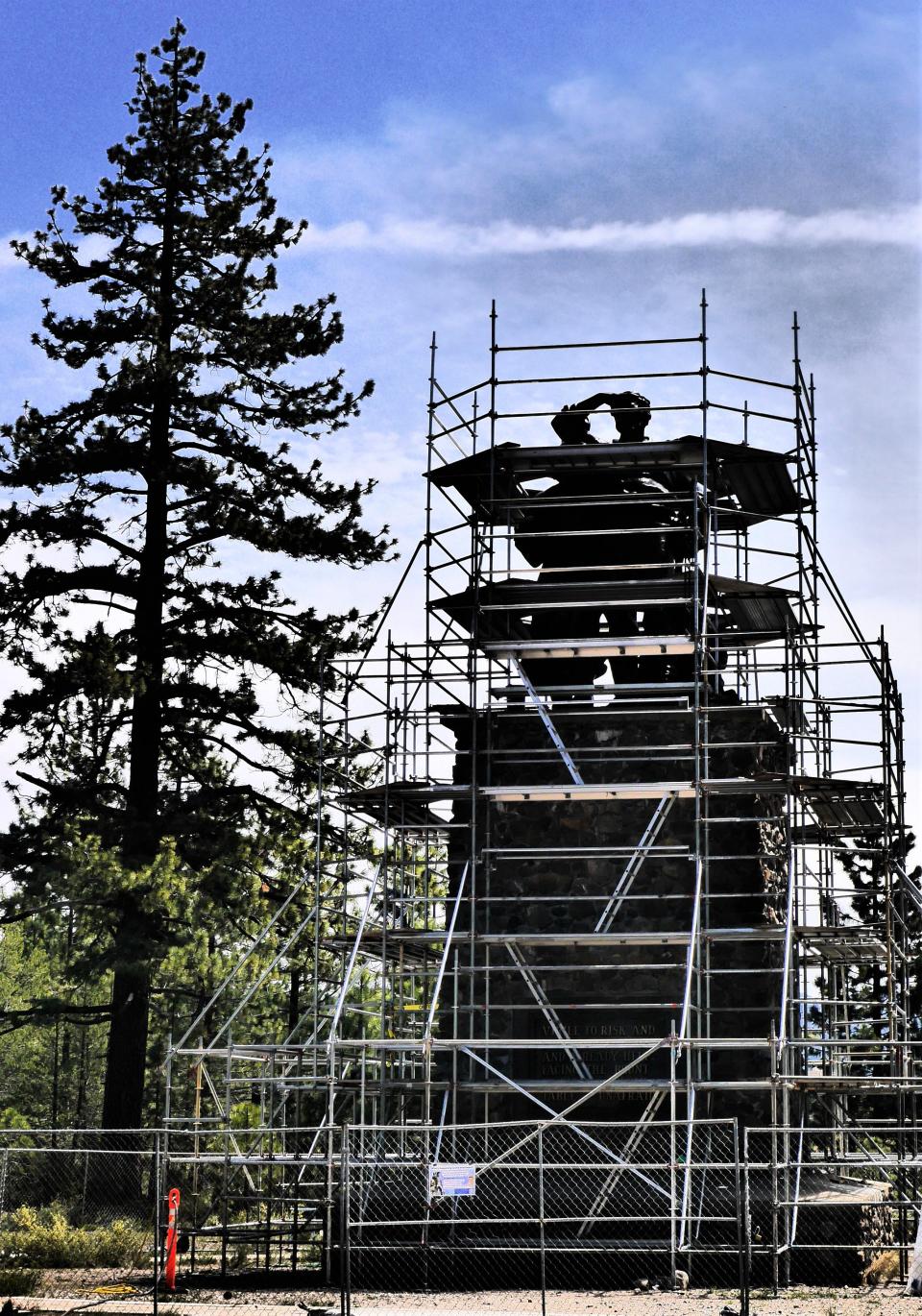Beyer's Byways: Lake Tahoe and Donner Pass are fascinating, beautiful

Often when Laureen and I travel, we like to take our time. Just cruising down the highway to see what we can see.
Of course, there are plenty of times when we have a destination in mind, and we must go-go-go.
Not always enjoyable, unless it is a dinner reservation at one of my favorite haunts.
“Why are you speeding?” Laureen would ask as I push the peddle to the metal.
I would shake my head. “I want to make sure there is plenty of shrimp scampi. Not taking any chances.”
We found ourselves near Lake Tahoe on a recent outing and did not have any real plans except just enjoying the time together.
We like that – spending time together. For a couple, probably a healthy trait.
Lake Tahoe happens to be the largest freshwater lake in the Sierra Nevada Mountain range, and from my experience, probably one of the coldest.

As a young man, I jumped from a cliff into the lake, which happens to be the largest alpine lake in North America, and instantly turned into a human ice cube. Luckily, a giant Sasquatch came by and thawed me out in his gigantic cup of hot chocolate.
It is a deep lake, nearly 1,700 feet, second only to Crater Lake in Oregon, which is just shy of 2,000 feet deep.
There are monsters in those depths – I have done the research.
The lake is part of the Lake Tahoe Basin and is about 2 million years old. It gets its shape by being carved out by glaciers during a couple of previous ice ages.
This occurred during the Quaternary glaciation, alternating series of glacial and interglacial periods during the Quaternary period that began about 2.5 million years ago. Scientists, and I believe in science, say that these ice ages are ongoing and in fact, our last one was only about 12,000 years ago.
These same scientists state that because there are still glaciers around the world, the ice age is in fact, not over. Puts an interesting spin on climate change and global warming, doesn’t it?

So, we drove around Lake Tahoe, taking in the beautiful Jeffrey Pines, Ponderosa Pines, Sugar Pines and a lonely Chris Pine standing alongside the highway.
Blue shimmering water during the summer seemed very inviting, but I had learned my lesson as a young man – no swimming for us.
And yet, Lake Tahoe has something for everyone. It is truly a resort town of all seasons.
In the winter there is ample skiing on some of the best slopes in the United States. People swooshing down steep inclines on skis, snowboards, and on their rear ends. Snuggling up at a ski lodge with a warm cup of Earl Grey or a Spiced Apple Hot Toddy by a large blazing fire.
It is a winter wonderland, but the three other seasons offer just as much enjoyment.
Hundreds of hiking and biking trails roam over the gorgeous outdoor country. Horseback riding paths wind in and out of forests, giving the riders a chance to see what this mountainous country looked like hundreds of years ago.
There is fishing, boating, jet skiing, parasailing, kayaking, swimming (nope), just to name a few of the enticing things to do on the crystal-clear waters of Lake Tahoe.
For those who don’t mind losing money, there are so many casinos on the Nevada side of the lake that it would take a month to visit them all and more cash than this writer has.

Lake Tahoe is a place for any budget. High-dollar house rentals right on the lake, hotels with million-dollar views of the lake, campgrounds on the lake, and other places to rent which may or may not have a view at all. But the thing they all have in common is they are in Lake Tahoe with clean mountain air.
While driving around the lake, we stopped here and there at this viewing location or that viewing location.
One spectacular view is looking down upon Fannette Island.
It is a small island located in Emerald Bay on the west side of the lake. A stone structure, built in 1928, used as a tea house by Mrs. Knight. Mrs. Knight would boat her friends out there for tea around a small fireplace.
Seems a long way to go for tea when a Starbucks is on each street corner. It is still there but is in poor shape after years of vandals doing their vandal sorts of things to it.
After circling the lake and enjoying all the sights and smells Mother Nature could offer, we headed north on Highway 267 and then moved west along Interstate 80.
The interstate itself curves around some pretty scenery as we looked to our south and saw the deep blue waters of Donner Lake.
We stopped, walked along one of the numerous beaches and marveled how people were jumping off boat docks and seemed to be enjoying the minus 40-degree water.
I shook my head.
“You would do it if you were a teenager again,” Laureen said.
“With age comes wisdom,” I replied.
Soon we came upon the Donner Memorial State Park, which recounts one of the most tragic events that occurred during the migration west by pioneers in the mid-19th century.
During the winter of 1846 and 1847, a group of pioneers got stranded in the Sierra Nevada Mountain Range at Truckee Lake, now Donner Lake, about 20 miles west of present-day Lake Tahoe.
The two main family units, the Donners and the Reeds, had left Missouri with other migrants and headed west along the Oregon Trail. In all, there were 87 members which made up their wagon train.
Along the way, they heard of a short-cut – haven’t we all – and were determined to follow it.
It was the Hastings Cutoff, named after explorer and trailblazer Lansford Hastings. The trail bypassed the already established and well-proven paths used by countless other wagon trains but was not intended for the large Conestoga wagons making up the Donner-Reed party. Besides, there were 43 children in this group, which would make the cutoff that much more perilous.
The trip west should have taken four to six months along the well-used trails but because this party decided to take the cutoff, it added much precious time to their travels.
Reaching the Sierra Nevadas, many of the wagons had to be dismantled and hoisted up and over peak after peak. Then, all the goods carried in those wagons would have to be collected, repacked and then the journey could begin again.
This ordeal happened time after time until finally, they were weeks, if not months, behind schedule of reaching the locale of Sutter’s Fort in Northern California.
Upon reaching Truckee Lake in November 1846, heavy snow began to fall and did not let up. It was believed that in the next four months, as the families hunkered down in makeshift shelters the snow piled up to 20 feet at their location.
A ranger at the Donner Memorial stated that newer research indicated the snow was probably no more than 12 feet deep. But that’s a difference that made no difference.
And the question is – how can anybody get stuck in snow as tall as a semi-truck? And we thought pioneers were tough.
Turned out that the winter of 1846-1847 was one of the worst on record.
The members of the wagon train were stuck until help arrived in February 1847. They spent four months trapped in snow drifts they could not even force themselves through.
Out of the original 87 members, only 48 survived.
Historians believe this is one of the most fascinating tragedies in California history and in the entire record of American westward expansion.
Fascinating because some of the party turned to cannibalism when their food ran out.
The Donner Memorial State Park includes a campground, visitors center, picnic tables, trails through the woods to where it is believed some of the wagon train members stayed during the four months of their misadventure.
A tall statue honoring those who had belonged to this party of migrants is being refurbished.
It is hallowed ground, no matter the circumstances.
Mistakes were made seemingly daily by these people who had no real frontier experience. Like many folks of that time, they heard of the opportunities out west and jumped at the chance, leaving their comfortable lives east of the Mississippi River.
They never dreamed of the hardships they would encounter along the nearly 2,000-mile trek across unforgiving and dangerous landscapes.
They were neophytes not prepared.
Many made it and many did not along the Oregon Trail or other paths they moved across. In total, it is estimated that some 35,000 lost their lives along the Oregon trail, averaging one grave for every 80 yards along its length.
We took our time in the visitor center museum reading about the history of the Shoshone peoples that lived nearby, the tragedy of the Donner Party, the contributions of the Chinese who emigrated to America, and the lighter side of how people began driving automobiles along the highways of California to see what they could see.
Afterward, we sat and had a bite of lunch beneath a tall tree.
It was peaceful in a place that once had not been so to a group of dreamers.
This article originally appeared on Victorville Daily Press: Lake Tahoe and Donner Pass what to see, where to go: Beyer's Byways

